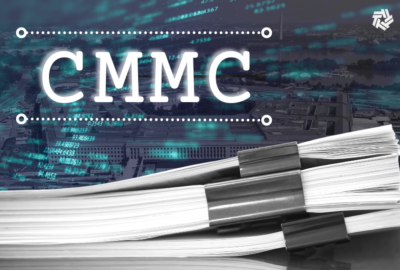How the Pentagon is messing up a crucial contract finance study three years in the making
The Defense Department has issued a request for information on a study of finance. Three years in development, the study is supposed to take a comprehensive loo...
Best listening experience is on Chrome, Firefox or Safari. Subscribe to Federal Drive’s daily audio interviews on Apple Podcasts or PodcastOne.
The Defense Department has issued a request for information on a study of finance. Three years in development, the study is supposed to take a comprehensive look at financing and the financial health of the defense industrial base. Many contractors think the study is too narrow in scope. The Federal Drive with Tom Temin discussed what DoD needs to do to improve, with the executive vice president for policy at the Professional Services Council, Stephanie Kostro.
Interview transcript:
Tom Temin: Stephanie, this study, first of all, give us the background on what is going on here. And what’s in that RFI?
Stephanie Kostro: Well, thanks so much for having me, Tom. This RFI came out about a month ago and comments have already been due. This study is three years, as you mentioned, in the making. The Government Accountability Office recommended back in 2019, that the Department of Defense undertake a comprehensive study of its contract finance policies and programs. That would be the first comprehensive study since 1985, when it was a defense, finance and investment study that came out. And so in the last 30 years or so, that landscape has changed quite a bit. So we were in agreement that this study needed to happen.
Unfortunately, the RFI focused on engaging industry on specific questions related to their financial health and access to financing. It did not ask questions that we thought were very pertinent to how the market has changed dramatically since 1985.
Tom Temin: The market changing meaning?
Stephanie Kostro: I mean the financial markets. The financial markets since 1985, have undergone dramatic changes, in terms of the types of finance available to companies, products, companies versus services companies, this study appears to look very closely at financing for products companies, and not so much services companies. The differentiation is this Tom, when services companies incur costs, they do it quite a bit before they have to invoice them for the government. Products companies, it’s a little bit more straightforward in terms of how liquid they can be in terms of financing, and when they can invoice and get payment from the government. For services companies, oftentimes, those are long lead workforce dependent costs that they incur, and they incur those months, sometimes years before they get to invoice them to the government. And so that is something that we are also taking a hard look at.
Tom Temin: Right. So then you would urge the Pentagon to do what then with the study?
Stephanie Kostro: We’ve asked them to broaden the scope quite a bit. You know, this is a this is a two phase study that he contracted out to academic institutions and other folks who can conduct these kinds of deep analyses, we’ve asked them to go ahead and broaden the scope of it beyond just simply what is your access to financing industry, and instead look at how they are structured alongside the market, how the government and the market can work together to ensure the health of the defense industrial base. One other item that we always point out, Tom, is that the government tends not to reward growth. And this is important for small businesses and midsize businesses who are doing business in the government space, you have set asides for small businesses, they do very well. They get sized out of their small status. And then they either get acquired by larger companies, they get merged with companies, or they simply go out of business. The other alternative is if they go back to small size status. So we’ve encouraged the Department of Defense to think hard about how can they better reward growth? If you’re talking about encouraging small businesses to do better in many small business owners minds, that means they want to grow, they want to stay in this business. How can they encourage that kind of health in the defense industrial base?
Tom Temin: And how can they help growth because if you grow out of small business, people, either as you say sell the company or a lot of them, sell it and then go start another one. And so there’s this constant seeding of the same field.
Stephanie Kostro: If that’s what the small business owners want to do. I think that’s great. There are some small business owners who do grow out of their small size status and want to stay in business without being acquired. And we’ve encouraged through our mid sized company working group we have at the Professional Services Council, to think about how they can put incentives in place to keep midsize companies viable going forward. And that are things like during the evaluation process, can you offer extra credit or points if you are a midsize company? We’re not arguing for a midsize company set aside, because that just moves the goalposts, right? You have small business and midsize business and that kind of thing. We are encouraging creative ways, for example, during the evaluation process to reward midsize companies because that is also a source of innovation that you might not get out of other segments of the industry.
Tom Temin: We’re speaking with Stephanie Kostro, she’s vice president for policy at the Professional Services Council. And another topic which seems to be rather controversial now is the non-displacement of qualified workers under service contracts. My basic question, if the government switches contractors to do continuation of certain work and the employees from the prior contractor get right of first refusal with a new contractor. My question is, what if they switched contractors because they didn’t like those people didn’t want them on the contract anymore?
Stephanie Kostro: That’s a great question. The way the executive order and the resulting Department of Labor proposed regulations read is that these are for qualified workers. And so the definition of what that means what, if it’s the same or similar work, those definitions are critically important to how we move forward with this. This was a policy that was put in place during the Obama administration, it was repealed, the attempt is to put it in place again. There are a few notable changes since this was the name of the game back back in the Obama administration. This new proposed rule does leave some discretion up to employers about who they can bring on.One word of caution, though, Tom, we’re talking a lot about moving away from lowest price technically acceptable during the bid process. That means basically, that, you know, if you can meet the requirements, and you can undercut others on pricing, you should be awarded the contract. We don’t like that model, we prefer best value, what is the bang for the buck that you’re going for? And what can companies bring to the table that encourages companies to offer innovations and new ways of thinking. The problem that you face with this non-displacement of qualified workers under services contracts, is that you’re still encouraging bidders to bid low. And then you’re faced with a situation in which you’ve got incumbent workers, workers under the incumbent contractor, who might actually have to take a pay cut, to go work for the new awardee. Now, again, it’s a right of first refusal in certain job markets, workers might not have a choice, they might, they might have to go to the new contractor. And so this creates an interesting disturbance in the supply demand for qualified workers. And so we are looking at this set of proposed rules of the Department of Labor comments are due Aug. 15. We’ve already asked for an extension if you print out the actual Word document, it’s 160 pages of changes to labor regulations, or so I would argue that we do need a little bit more time and so hopefully, the Department of Labor will will help us out with that.
Tom Temin: One hundred-sixty pages, now people know what their weekend reading is going to look like. And just a final question on the competitiveness act, the U.S. Innovation and Competition Act, which started out as $52 billion for the semiconductor industry now 56 billion plus there’s another $250 billion of amendments. There’s one big thing that’s not there, according to the council.
Stephanie Kostro: Yeah. So we are supportive, and we’re encouraging House and Senate leadership to quickly pass what has been called you seek, as you pointed out, the U.S. Innovation and Competition Act, or America COMPETES Act, this has been several bills battling for attention over the last year or so. We are supportive of this bill, but it is missing something. And that is the tax amortization schedules for [research and development] investments. Since the 1950s, U.S. companies have been able to immediately deduct any R&D investments, take the full value of that deduction in the year in which those costs were incurred. This encouraged the companies to take that savings and reinvest it in R&D, it was a way to infuse their R&D efforts with cash. A few years ago, under the Tax Cuts and Jobs Act to create revenue for the federal government. They decided they were going to amortize those costs R&D investments over the five years, and that has had a stultifying effect, it just recently took place. And there are studies that say, by reducing R&D spending in this way, it’ll be for over 4 billion annually for the first five years more than 10 billion annually, and the second set of five years and beyond. And so that is taking R&D investment out of the pipelines. That I’ll tell you, Tom, what China does, not that we necessarily need to pattern ourselves off of China, but they offer something called a super deduction, which is they allow companies to deduct two times the amount of their eligible R&D investment. And so that is infusing money for R&D back into the Chinese system that we’re just not doing. And so we’ve encouraged congressional leaders to include a delay to this tax amortization of R&D investment that will help us keep more R&D investment in the system, and hopefully advanced us innovation.
Tom Temin: So if you put the R&D tax deduction back in there, then maybe it wouldn’t need the other $300 billion, subsidizing everything else?
Stephanie Kostro: It is, you know, out of all of the things that made it into this bill, we were saddened to see that this did not on the Senate side, and we’re hoping during this process that they can put it back in.
Tom Temin: All right, well, from your lips to senators ears. Stephanie Kostro is vice president for policy at the Professional Services Council. As always, thanks so much.
Stephanie Kostro: Thanks, Tom.
Copyright © 2024 Federal News Network. All rights reserved. This website is not intended for users located within the European Economic Area.
Tom Temin is host of the Federal Drive and has been providing insight on federal technology and management issues for more than 30 years.
Follow @tteminWFED






